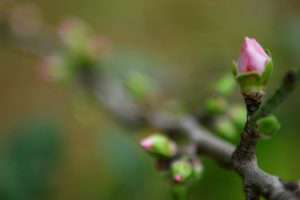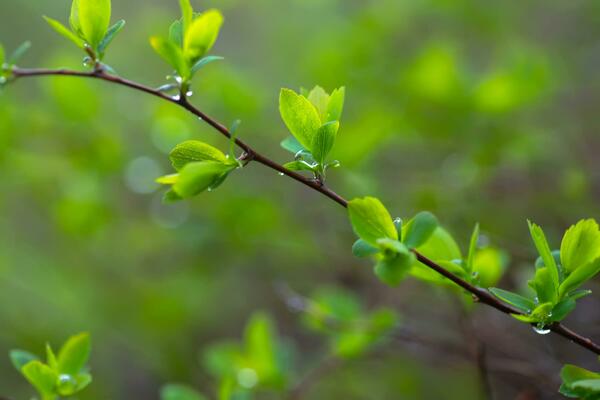When do leaves grow back on trees?
As the seasons change, a typical question arises: when do trees’ leaves grow back on trees? A variety of environmental conditions control the fascinating process of leaf growth. Understanding this cycle broadens our appreciation for nature and helps in various practical applications such as gardening, landscaping, and environmental protection.
When do leaves grow back on trees?
Understanding the annual cycle of leaf growth

Leaf growth and dormancy
Trees in temperate regions change dramatically throughout the year, mainly due to temperature and lighting variations. As temperatures fall and the days shorten, trees go into dormancy. This dormancy phase is critical to their survival because it allows them to save energy and weather the harsh winter conditions. Reduced chlorophyll production causes leaves to lose colour and finally fall off.
Spring Awakening
Spring marks the beginning of the rejuvenation cycle. As temperatures rise and daylight hours increase, trees emerge from dormancy. The buds, quietly forming throughout the winter, kick off the growth process. These buds contain all the components required for new leaves, flowers, and branches. The exact timing of bud bursts varies by species, location, and weather.
Factors affecting leaf growth timing
Temperature and climate
Temperature is a major factor in determining when leaves grow again on trees. Trees rely on a steady temperature rise to signify the end of dormancy. In regions with milder winters, trees may begin budding as early as late winter, whereas this process may take until late April in colder climates. Unusual temperature changes can also affect the timing of leaf growth, resulting in premature or delayed budding.
Photoperiod
Another important consideration is the length of daylight, sometimes known as the photoperiod. Trees are sensitive to daylight hour fluctuations, which serve as cues for timing several physiological processes, including leaf formation. As spring days lengthen, the increased exposure to light causes the buds to grow and eventually burst open, forming new leaves.
Soil Condition and Moisture
Soil factors, especially moisture levels, considerably impact the health and timing of leaf growth. Adequate soil moisture is required for the root system to operate correctly and promote the formation of new leaves. Inadequate rainfall or poor soil conditions can stress trees, slowing or stunting leaf growth. In contrast, ideal soil conditions encourage vigorous growth and early leaf formation.
Species-specific characteristics
Leaf growth patterns vary between tree species. Deciduous trees, such as maples, oaks, and birches, shed their leaves each year and replant them in the spring. Each species has a unique schedule and environmental needs for leaf growth. Oaks, for example, typically leaf out later than maples, while birches frequently exhibit early signs of leafing. Evergreen trees, such as pines and firs, keep their needles year-round but go through cycles of needle replacement.
Regional variation in leaf growth

Northern Hemisphere
In the Northern Hemisphere, leaf growth typically begins in early to mid-spring, between March and May, depending on latitude and local temperature conditions. In the southern United States, trees may begin budding as early as February, whereas in the northern states and Canada, this process may not start until late April or May.
The Southern Hemisphere
In the Southern Hemisphere, where the seasons alternate, leaf growth typically commences in early to mid-September and persists until November. In places such as Australia and New Zealand, the spring season heralds the start of new leaf development after the lethargy of the winter months.
Climate Change’s Impact on Leaf Growth
Timing Shifts
Climate change is dramatically altering the timing of leaf growth. Warmer global temperatures are causing phenological alterations in trees, resulting in earlier spring bud bursts in multiple locations. This alteration can potentially upset ecosystems’ natural equilibrium, impacting wildlife food availability and changing species relationships.
Increased Vulnerability
Due to warmer temperatures, trees that bud earlier may be more susceptible to late spring frosts, destroying the delicate new leaves and harming the tree’s general health. Changes in precipitation patterns might also result in more droughts or excessive rainfall, which can hurt leaf growth.
Related Posts:
Practical Implications for Gardeners and landscapers
Timing planting and pruning.
Understanding the leaf growth cycle is essential for gardeners and landscapers. Planting and pruning should coincide with the tree’s natural growth cycle for optimal results. Pruning is most effective during the dormant season, while planting often yields the best results in early spring or fall when trees are not under stress from vigorous development.
Monitoring Tree Health
Regular soil and tree health monitoring can help anticipate and mitigate leaf growth concerns. Ensuring trees have enough water and nutrients, especially during essential growth, promotes leaf development and overall tree health.
FAQS
What causes new leaves to appear on trees?
Temperature fluctuations and sunshine length are the primary triggers for new leaf growth on trees. As spring temperatures rise and days lengthen, these environmental cues tell trees to break dormancy and begin budding. The additional warmth and light stimulate the buds that have been dormant all winter, causing them to grow and eventually burst into new leaves.
Do all tree species have the same leaf growth cycle?
No, the timing for leaf growth varies by tree species. Deciduous trees, such as maples and oaks, drop their leaves in the fall and regrow them in the spring, though the exact date varies. Oaks frequently leaf out later than maples. Like pines and firs, Evergreen plants have needle replacement cycles but do not lose all of their foliage at once, unlike deciduous trees.
Is there any indication of when a tree will begin to produce leaves?
Yes, there are various indicators of approaching leaf growth. One of the first symptoms is buds bulging on branch tips as they prepare to open. Other clues include the softening of bud scales and the emergence of a green tint as chlorophyll formation begins. Observing these indications can help forecast when a tree will start to sprout leaves, allowing for more precise planning of gardening and landscaping tasks.
Conclusion
Various environmental factors, species traits, and regional conditions influence the regrowth of leaves on trees. As we gain a better understanding of this natural process, we will be able to appreciate nature’s delicate rhythms and make more informed judgments in our interactions with it.




